Sustainable Management of Water Treatment Residuals
Introduction
Welcome to the world of sustainable management of water treatment residuals, where we tackle the not-so-glamorous side of water purification: water treatment waste. You might be thinking, “Waste? How exciting can that be?” Well, hold onto your hats because we’re diving into a topic that’s as crucial as it is fascinating!
Think of water treatment waste like the leftovers from a gourmet meal. Sure, the main dish (clean, drinkable water) is what everyone raves about, but what happens to those scraps? If we just toss them aside without a second thought, we’re missing out on some serious opportunities for sustainability and efficiency.
With global population growth and increasing industrial activity, the need for effective wastewater treatment has never been more pressing. Every day, municipalities and industries generate tons of residuals think sludge from sewage treatment and byproducts from industrial processes. These materials can either become environmental burdens or valuable resources depending on how we manage them.
In this blog post, we’ll explore innovative strategies for managing this waste effectively. From cutting-edge technologies like membrane filtration systems to practices that promote wastewater reuse, we’ll uncover how sustainable approaches not only improve compliance with drinking water standards but also enhance overall efficiency in our water systems.
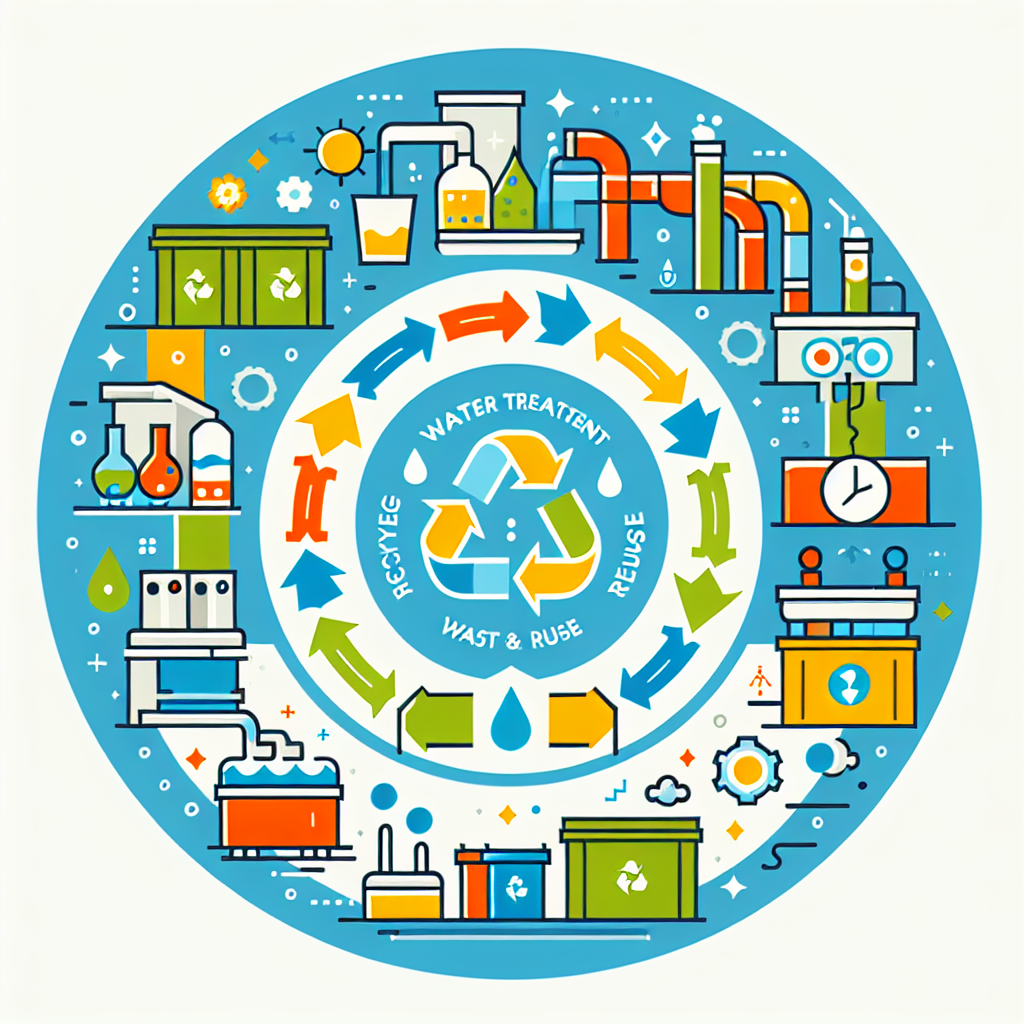
Buckle up as we embark on this journey through the often-overlooked yet critical realm of wastewater management. Let’s turn those pesky residuals into something extraordinary!
Understanding Water Treatment Waste
Water treatment waste is the unsung hero of the water purification process, often overlooked but crucial in ensuring our water is safe and clean. Imagine it as the backstage crew at a concert: without them, the show can’t go on! This waste primarily consists of residuals from various treatment processes, including biosolids, sludge, and other byproducts generated during wastewater treatment.
To grasp the enormity of this issue, consider that a significant portion of water treatment waste comes from biosolids nutrient-rich organic materials resulting from the treatment of sewage. According to the EPA, these biosolids can be repurposed in agriculture or landscaping, turning what was once a waste problem into a resource. Talk about recycling!
Water treatment waste isn’t just limited to sewage treatment; it also encompasses industrial water treatment processes. Industries generate a variety of effluents that require proper disposal methods to meet drinking water standards and environmental compliance. This includes everything from chemical water treatments to biological processes that utilize microorganisms for breaking down pollutants.
The Composition of Water Treatment Waste
So what exactly makes up this mysterious concoction called water treatment waste? Here’s a quick rundown:
- Biosolids: Organic matter recycled from wastewater.
- Sludge: A semi-solid residue left after wastewater has been treated.
- Effluents: Treated liquid discharged from a wastewater plant.
- Chemicals: Residuals from chemical treatments used in purification processes.
The Challenges of Managing Water Treatment Waste
The management of water treatment waste poses several challenges:
- Regulatory Compliance: Facilities must adhere to strict EPA regulations regarding disposal methods.
- Cost Efficiency: Finding cost-effective solutions for treating and disposing of residuals can be tricky.
- Public Perception: There’s often stigma associated with using treated wastewater or biosolids in agriculture.
Key Takeaway: Understanding and managing water treatment waste is essential for sustainable practices in both municipal and industrial settings. By transforming residuals into valuable resources, we can achieve better environmental compliance while promoting innovative recycling solutions!
Importance of Sustainable Water Practices
When it comes to managing water treatment waste, sustainable water practices are not just a trendy buzzword; they are the lifeblood of effective wastewater management. Think of these practices as the superhero cape for our water systems, swooping in to save the day while ensuring compliance with environmental regulations and community health standards.
Key Takeaway: Sustainable water practices help municipalities and industries not only comply with regulations but also reduce operational costs and environmental impact.
Environmental Compliance
In our quest for cleaner water, we must navigate a complex web of regulations. From the EPA’s stringent drinking water standards to local sewage treatment mandates, staying compliant is crucial. Sustainable practices ensure that your wastewater treatment facility meets or exceeds these requirements, minimizing the risk of fines and enhancing community trust.
Energy-efficient Wastewater Solutions
Did you know that wastewater treatment can be a major energy guzzler? By implementing energy-efficient solutions like anaerobic digestion systems or advanced oxidation processes, facilities can cut down on energy consumption significantly. This not only reduces operational costs but also lessens the carbon footprint of your water utilities. It’s like upgrading from a gas-guzzler to a sleek electric vehicle good for your wallet and the planet!
Reducing Carbon Footprint in Water Utilities
Sustainable water practices are all about minimizing waste and maximizing efficiency. Techniques such as zero liquid discharge systems and rainwater harvesting not only help in reducing overall waste but also contribute to lowering greenhouse gas emissions. By rethinking how we manage resources, we can turn potential pollutants into valuable assets making every drop count!
The Ripple Effect on Communities
The benefits don’t stop at compliance and cost savings; sustainable practices create a positive ripple effect throughout communities. Cleaner effluent means healthier ecosystems, which leads to better recreational opportunities and improved public health outcomes. Imagine your local river teeming with fish again it’s not just a dream; it could be our reality with effective sludge management and innovative water recycling techniques.
In conclusion, embracing sustainable water practices is like investing in a high-yield savings account for our environment. The returns may take time, but they are invaluable: cleaner waterways, healthier communities, and a more resilient ecosystem.
Wastewater Treatment Processes and Residuals Management
When it comes to dealing with water treatment waste, understanding the processes and management strategies is key to ensuring that we not only comply with drinking water standards but also protect our environment. Let’s dive into the nitty-gritty of wastewater treatment processes and how we can effectively manage the residuals that come from them.
Biological Treatment Processes
Biological treatment processes are like the superheroes of sewage treatment. They use microorganisms to break down organic matter, making them essential for effective water purification. This method can significantly reduce the amount of sludge generated, which is a win-win for both efficiency and sustainability.
Chemical Water Treatment Methods
Chemical water treatment methods involve adding chemicals to remove contaminants from wastewater. While this process is effective, it can lead to residuals that need careful management. Think of it as adding seasoning to a dish; too much can spoil the flavor! Proper dosing and monitoring are crucial to minimize chemical waste.
Tertiary Water Treatment Processes
Tertiary treatment processes take things up a notch by further polishing treated wastewater before it’s reused or discharged. This stage often employs advanced filtration systems and nutrient removal technologies, ensuring that any remaining contaminants are dealt with effectively. It’s like giving your favorite outfit one last iron before stepping out!
Nutrient Removal Technologies in Sewage Plants
Nutrient removal technologies, such as those targeting nitrogen and phosphorus, are vital in preventing eutrophication in our waterways. These processes help keep our lakes and rivers healthy while also managing the residuals from wastewater treatment plants efficiently.

In conclusion, a comprehensive understanding of these wastewater treatment processes is essential for municipalities and engineers looking to implement sustainable water practices. By focusing on efficient residuals management strategies, we can pave the way toward cleaner waterways and healthier ecosystems.
Advanced Technologies for Waste Reduction
When it comes to water treatment waste, embracing advanced technologies is like upgrading from a flip phone to the latest smartphone it’s a game changer! These innovations not only enhance efficiency but also significantly reduce the volume of waste generated during water treatment processes. Let’s dive into some of the coolest tech on the block!
Membrane Filtration Technology
This tech is like having a bouncer at an exclusive club, only letting in the VIPs (clean water) and leaving all the unwanted guests (contaminants) outside. Membrane filtration systems use semi-permeable membranes to separate particles and impurities from water, making them essential in both industrial water treatment and municipal settings. Notably, reverse osmosis systems for waste management have taken center stage here, offering high efficiency in removing salts and other impurities.
Anaerobic Digestion Systems
If you think of wastewater as a buffet of organic material, anaerobic digestion is like inviting a bunch of hungry microbes to clean up! This biological treatment process breaks down organic matter without oxygen, producing biogas that can be used as renewable energy. Plus, it significantly reduces sludge volume talk about a win-win!
Advanced Oxidation Processes (AOPs)
AOPs are the superheroes of water purification, employing powerful oxidants to break down contaminants that traditional methods struggle with. Think of them as the Avengers assembling against pollutants! These processes are particularly effective for treating industrial effluents that contain stubborn organic compounds.
Key Takeaway: Implementing these advanced technologies not only helps in reducing water treatment waste but also aligns with sustainable practices that meet drinking water standards and environmental compliance regulations.
Tertiary Water Treatment Processes
This is where things get fancy! Tertiary treatment involves additional filtration and disinfection steps that polish off treated wastewater before it’s reused or discharged. Techniques such as sand filtration or UV disinfection ensure that the final effluent meets stringent quality standards for reuse applications perfect for municipalities looking to boost their wastewater reuse initiatives.
Sustainable Impact
By integrating these technologies into their operations, municipalities can achieve remarkable reductions in their carbon footprint while enhancing overall efficiency. For instance, facilities using zero liquid discharge systems can reclaim nearly all their wastewater for reuse, making them champions of sustainability!
According to recent studies, implementing membrane filtration technology can reduce operational costs by up to 30% while improving overall effluent quality.
In conclusion, leveraging advanced technologies for waste reduction isn’t just smart; it’s essential for any forward-thinking wastewater treatment plant. With innovations like membrane filtration and anaerobic digestion leading the charge, we’re on our way to cleaner water and a healthier planet!
Sewage and Industrial Effluent Management Strategies
When it comes to managing water treatment waste, sewage and industrial effluent management strategies are the superheroes of the water treatment world. They swoop in to save the day by tackling pollutants and ensuring that our waterways remain clean and safe. Let’s dive into some of these strategies that are paving the way for a more sustainable future.
Industrial Effluent Reduction Techniques
Industries are notorious for their hefty contributions to wastewater generation. But fear not! With innovative techniques, we can significantly reduce the amount of effluent produced:
- Process Optimization: Streamlining operations can minimize water usage, leading to less waste generated.
- Water Recycling: Implementing closed-loop systems allows industries to reuse water, reducing their overall effluent output.
- Pre-treatment Solutions: Utilizing advanced filtration systems before discharge can significantly cut down on harmful pollutants entering our water systems.
Phosphorus Recovery from Wastewater
Did you know that phosphorus is a valuable resource? Instead of letting it go down the drain (literally), innovative technologies are now able to recover phosphorus from wastewater:
- Chemical Precipitation: By adding chemicals to wastewater, we can precipitate phosphorus, allowing for its recovery and reuse in fertilizers.
- Biosorption Techniques: Using natural materials like algae or certain types of bacteria can effectively capture phosphorus from wastewater streams.
- Centrifugation: This method separates solids from liquids in wastewater, enabling efficient recovery of nutrient-rich sludge that contains phosphorus.
Key Takeaway: Implementing effective sewage and industrial effluent management strategies not only helps in reducing water treatment waste but also transforms potential pollutants into valuable resources. The future is bright with sustainable practices!
Innovative Solutions for Wastewater Reuse and Recycling
When it comes to water treatment waste, innovation is the name of the game. With increasing pressures on our water resources, the need for effective wastewater reuse and recycling solutions has never been more critical. Let’s dive into some of the coolest strategies that are turning yesterday’s waste into tomorrow’s resource!
Greywater Treatment Systems
First up, we have greywater treatment systems. These nifty setups treat water from baths, sinks, and washing machines (you know, the stuff that’s not quite as dirty as sewage) to make it reusable for irrigation or even toilet flushing. Imagine your shower water helping your garden thrive talk about a win-win!
Key Takeaway: Greywater can account for up to 50% of residential wastewater, making its treatment a significant opportunity for water conservation.
Rainwater Harvesting in Industrial Settings
Next on our list is rainwater harvesting yes, it’s not just for hipster coffee shops anymore! Industries are catching on to this sustainable practice by collecting rainwater from rooftops and other surfaces. This harvested rain can then be treated and reused in various processes, reducing reliance on municipal supplies.
Rainwater harvesting can reduce potable water demand by up to 30% in industrial facilities.
Tertiary Treatment Processes
Tertiary treatment processes take wastewater treatment to the next level by polishing treated effluent to meet stringent drinking water standards. These advanced methods often include filtration systems and advanced oxidation processes that can remove pathogens and pollutants effectively. Think of it as giving wastewater a spa day before it rejoins the ecosystem!
Membrane Filtration Technology
This technology is like the bouncer at a club: only allowing the right substances through while keeping out all the undesirable elements. Membrane filtration systems are essential in both industrial and municipal settings, providing high-quality effluent that can be reused or safely discharged.
Anaerobic Digestion Systems
Anaerobic digestion is another innovative solution that transforms organic waste into biogas a renewable energy source! This process not only reduces landfill waste but also produces energy that can be used onsite or fed back into the grid. Talk about turning trash into treasure!
| Technology | Description | Benefits |
|---|---|---|
| Greywater Treatment Systems | Treats non-sewage wastewater for reuse. | Reduces freshwater use; lowers discharge costs. |
| Rainwater Harvesting | Catches rain from surfaces for reuse. | Saves potable water; cuts costs. |
| Anaerobic Digestion | Converts organic waste into biogas. | Generates renewable energy; reduces waste volume. |
The future of effective water management lies in these innovative solutions that not only address the challenges posed by water treatment waste but also pave the way towards sustainable practices in our communities. By embracing these technologies, municipalities and industries alike can contribute to a greener planet while meeting their operational needs.
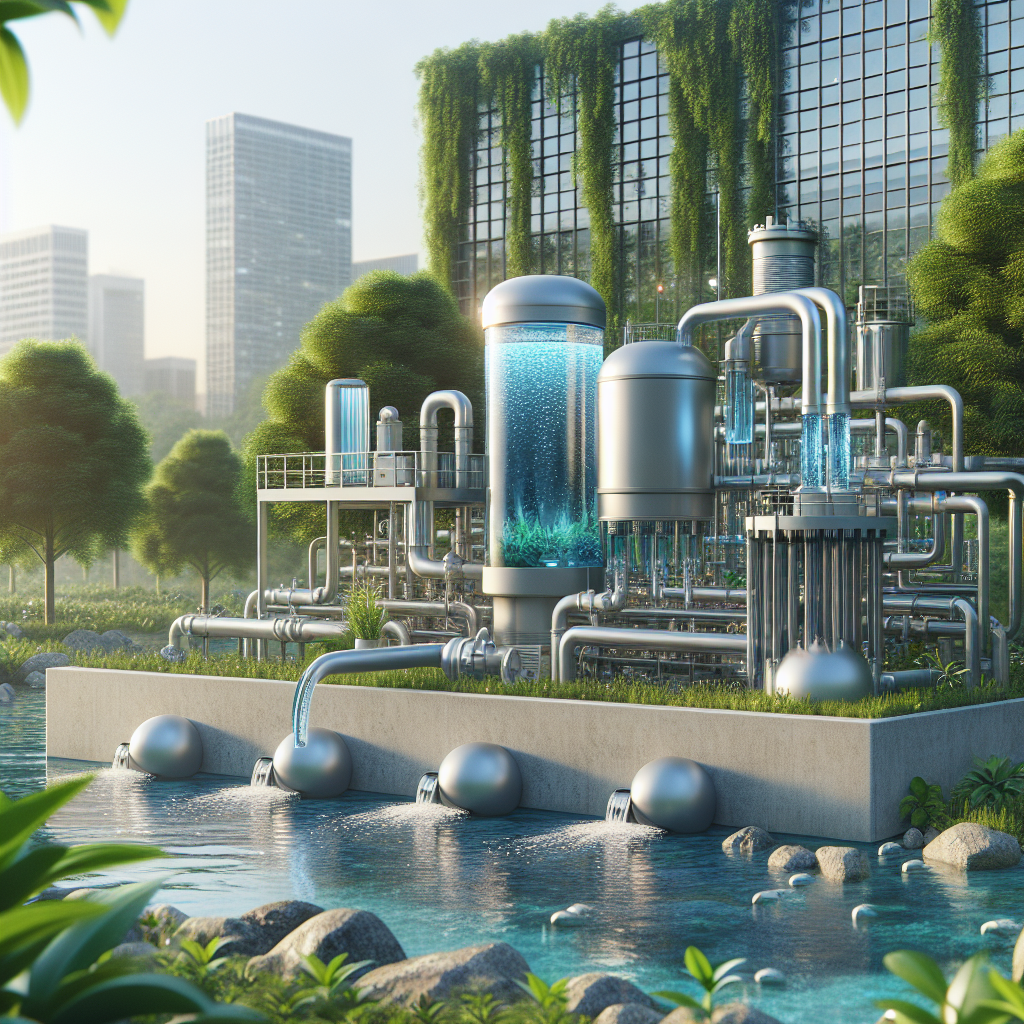
Biosolids Processing and Disposal Methods
When it comes to managing water treatment waste, biosolids processing and disposal methods are the unsung heroes of the wastewater treatment saga. Think of biosolids as the leftovers from your favorite meal while they might not look appetizing, they can be transformed into something valuable if handled correctly.
Biosolids are nutrient-rich organic materials resulting from the treatment of sewage sludge. They can be processed and utilized in various ways, turning what was once considered waste into a resource. Here’s a closer look at some common methods:
- Land Application: This method involves spreading treated biosolids on agricultural fields. It’s like giving crops a nutrient boost! However, strict regulations ensure that these applications comply with drinking water standards and environmental compliance.
- Composting: Think of this as the ultimate recycling project! Composting biosolids with other organic materials creates a rich soil amendment that enhances soil health while reducing landfill waste.
- Incineration: For those looking for a more high-energy approach, incineration burns biosolids at high temperatures, reducing their volume significantly. The resulting ash can sometimes be used in construction materials talk about a two-for-one deal!
- Anaerobic Digestion: This biological treatment process breaks down organic matter in the absence of oxygen, producing biogas that can be harnessed for energy. It’s like turning your waste into gold well, energy gold!
Each method comes with its own set of advantages and challenges. For instance, while land application enriches soils, it requires careful monitoring to avoid nutrient runoff into water bodies a classic case of “too much of a good thing.” On the other hand, anaerobic digestion not only reduces waste volume but also produces renewable energy; however, it requires significant upfront investment in infrastructure.
Key Takeaway: The choice of biosolid disposal method should align with local regulations, environmental impact considerations, and potential economic benefits. Embracing innovative technologies like advanced oxidation processes can further enhance biosolid management strategies and reduce overall water treatment waste.
The landscape of biosolid processing is continually evolving with advancements in technology and changing regulations. As municipalities strive for more sustainable practices in wastewater treatment, exploring options like membrane filtration technology or zero liquid discharge systems will become increasingly vital.
Zero Liquid Discharge Systems: A Sustainable Approach to Waste Management
Welcome to the future of waste management, where the phrase “waste not, want not” takes on a whole new meaning! Enter Zero Liquid Discharge (ZLD) systems the eco-friendly superheroes of the water treatment world. These systems are designed to eliminate liquid waste entirely, ensuring that every drop of water is reused and recycled. Talk about a win-win for both municipalities and Mother Earth!
So how do these magical systems work? Imagine a high-tech kitchen appliance that promises to turn your leftovers into gourmet meals. ZLD systems use advanced technologies like membrane filtration, reverse osmosis, and evaporation techniques to treat wastewater and recover valuable resources from it. This means that instead of just disposing of water treatment waste, we can transform it into something useful.
The Process Unveiled
The journey begins with the collection of wastewater from various sources be it industrial processes or sewage treatment facilities. Once collected, this water undergoes rigorous treatment processes:
- Pre-treatment: Here, large solids are removed using physical methods like screening.
- Membrane Filtration: This stage employs technologies such as microfiltration and ultrafiltration to separate contaminants from water.
- Reverse Osmosis: The magic happens here! This process pushes water through semi-permeable membranes, filtering out even the tiniest impurities.
- Evaporation: The remaining liquid is evaporated, leaving behind solid residues that can often be reused or safely disposed of.
The end result? Clean water ready for reuse in irrigation, industrial processes, or even as part of drinking water standards after additional treatment. It’s like turning sludge into gold!
Sustainable Benefits Galore
ZLD systems are not just about treating water; they represent a paradigm shift in how we think about waste management:
- Resource Recovery: Valuable materials like salts can be extracted for reuse.
- Environmental Compliance: By minimizing liquid discharge, facilities can meet stringent environmental regulations without breaking a sweat.
- Cost Savings: While initial investments may seem steep, reduced disposal costs and potential resource recovery can lead to long-term savings.
- Water Scarcity Solutions: In regions facing droughts, ZLD systems provide an innovative way to recycle existing resources instead of relying on freshwater sources.
Key Takeaway: Zero Liquid Discharge Systems exemplify sustainable management practices by turning wastewater into a resource rather than a burden. As industries continue to adopt these solutions, we move closer to achieving effective wastewater reuse and recycling objectives.
If you’re involved in municipal planning or engineering for wastewater treatment facilities, consider advocating for ZLD systems as part of your sustainability strategy. After all, who wouldn’t want to be part of a solution that turns waste into wealth?
The Role of Green Infrastructure in Stormwater Management and Control
When it rains, it pours especially in urban areas where stormwater can turn into a torrent of trouble. Enter green infrastructure, the superhero we didn’t know we needed for effective stormwater management and control. Think of it as nature’s way of handling water treatment waste before it becomes a problem.
Green infrastructure refers to a range of practices that use natural systems to manage stormwater effectively. These practices not only help in reducing runoff but also enhance water quality, making them essential for sustainable water practices. Here’s how they work:
- Rain Gardens: These are like nature’s sponges, designed to soak up rainwater from impervious surfaces like roads and rooftops. By using native plants that thrive in wet conditions, rain gardens filter pollutants and provide beautiful green spaces.
- Permeable Pavement: Imagine your driveway being a giant sponge! Permeable pavement allows water to seep through the surface, reducing runoff and promoting groundwater recharge. It’s a win-win for urban aesthetics and functionality.
- Green Roofs: Not just for hipster cafes anymore! Green roofs absorb rainwater, provide insulation, and reduce the urban heat island effect. They’re like cozy blankets for buildings that also help in managing stormwater.
- Bioswales: Picture long, landscaped ditches filled with vegetation designed to slow down and filter stormwater runoff. Bioswales are perfect for urban settings where space is limited but sustainability is key.
But wait there’s more! Green infrastructure not only helps with stormwater management but also plays a crucial role in wastewater treatment by enhancing the natural processes that break down pollutants. This can reduce the burden on traditional sewage treatment methods.
Did you know? Implementing green infrastructure can reduce stormwater runoff by up to 65%, significantly decreasing the volume of water treatment waste that needs to be managed through conventional methods.
A Case Study: Philadelphia’s Green City, Clean Waters Program
One of the shining examples of green infrastructure at work is Philadelphia’s Green City, Clean Waters program. This initiative aims to manage 85% of the city’s stormwater through green solutions by 2035. By integrating rain gardens, green roofs, and permeable pavements across the cityscape, Philadelphia is not just beautifying its streets; it’s revolutionizing how cities can handle stormwater while minimizing wastewater treatment challenges.
The Bottom Line
The role of green infrastructure in stormwater management is undeniable. It’s not just about controlling water; it’s about embracing nature as part of our urban planning toolkit. By investing in these sustainable solutions, municipalities can tackle both immediate stormwater issues and long-term water treatment waste challenges effectively.
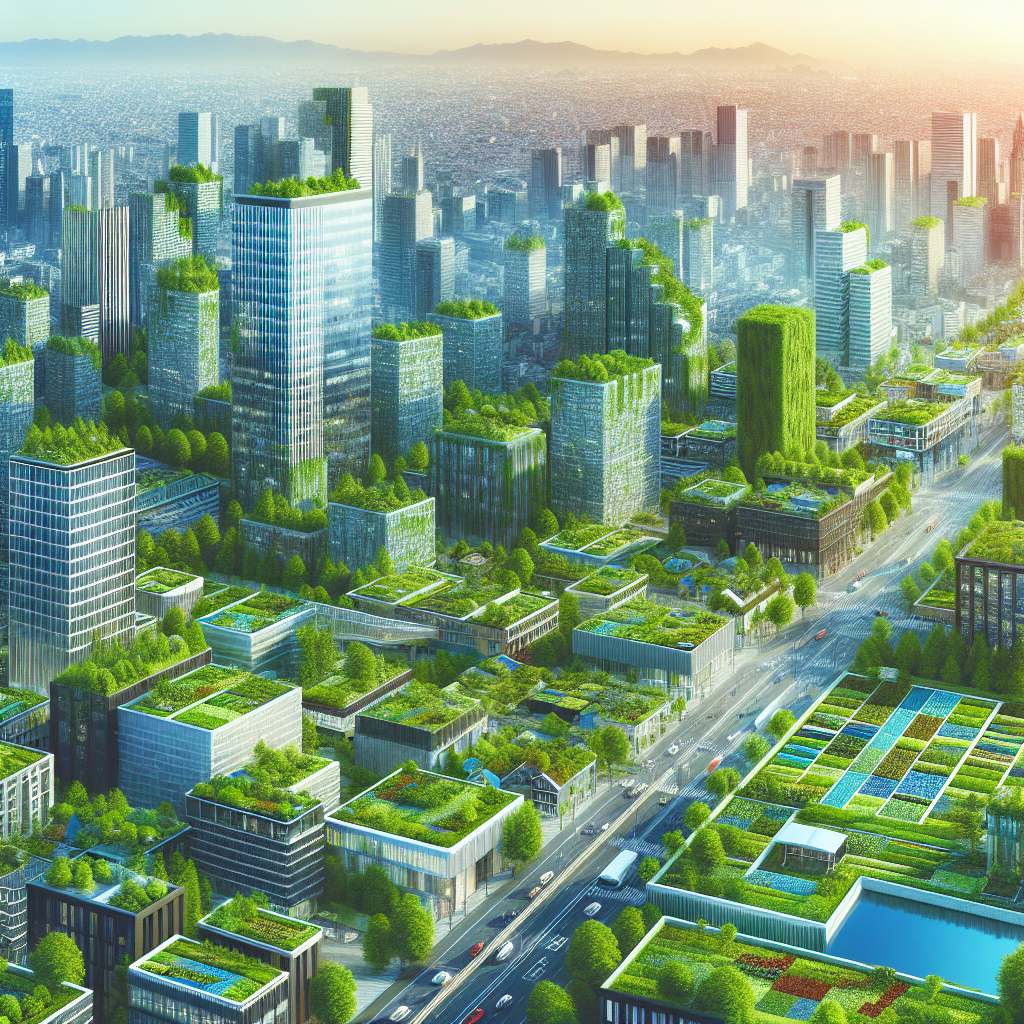
Aquaponics Systems: Integrating Fish Farming with Plant Growth for Sustainable Practices
Welcome to the world of aquaponics, where fish and plants live in perfect harmony, like a well-rehearsed duet! Imagine a system where you can grow your own vegetables while raising fish, all in a sustainable cycle that reduces water treatment waste. It’s like having your cake and eating it too if your cake was a fresh salad and your dessert was a side of grilled fish!
Aquaponics combines aquaculture (fish farming) with hydroponics (growing plants without soil). This innovative approach not only minimizes water use but also transforms what would typically be considered waste into nutrient-rich resources. When fish are raised, they produce waste that is rich in nutrients. Instead of being discarded as water treatment waste, this nutrient-rich water is circulated to the plants, which absorb the nutrients and clean the water in return.
The Benefits of Aquaponics for Waste Management
- Water Efficiency: Aquaponics systems can use up to 90% less water than traditional agriculture. This is crucial as municipalities face increasing challenges with wastewater treatment and water scarcity.
- Nutrient Recycling: The integration of fish farming with plant growth allows for effective nutrient recycling, reducing the need for chemical fertilizers often associated with wastewater treatment processes.
- Reduced Environmental Impact: By minimizing reliance on synthetic inputs and decreasing water pollution from runoff, aquaponics aligns perfectly with sustainable water practices.
Common Misconceptions about Aquaponics
While aquaponics sounds like a magical solution, it’s not without its challenges. Here are some misconceptions that might lead you astray:
- It’s Easy-Peasy: While it seems straightforward, managing an aquaponics system requires knowledge about both fish care and plant growth kind of like being a chef and a fisherman at the same time!
- No Need for Monitoring: Just because it’s a closed-loop system doesn’t mean you can set it and forget it. Regular monitoring of pH levels, nutrient concentrations, and fish health is essential to keep everything swimmingly.
- Only Suitable for Small Scale: While many start small, larger commercial operations are popping up as more municipalities look to integrate these systems into their sustainable practices.
Takeaway: Aquaponics presents an exciting opportunity for municipalities looking to innovate their approach to wastewater management by turning what could be harmful waste into valuable resources. It’s not just about managing water; it’s about rethinking how we utilize every drop!
Conclusion
In the grand tapestry of water treatment waste management, the threads of sustainability weave a compelling narrative. As municipalities and engineers face the dual challenge of meeting drinking water standards while ensuring effective wastewater disposal methods, innovative strategies are not just beneficial they’re essential.
The importance of adopting sustainable practices in water purification cannot be overstated. From leveraging advanced technologies like membrane filtration technology to implementing zero liquid discharge systems, the future of water treatment is bright and green!
Key Takeaway: By embracing cutting-edge solutions such as anaerobic digestion systems and nutrient removal technologies, we can significantly reduce the environmental impact of wastewater treatment. This is not merely a trend; it’s a necessity for compliance with EPA regulations and for fostering a healthier planet.
As we look ahead, it’s clear that effective sludge management and innovative approaches to effluent treatment are crucial in mitigating the challenges posed by water treatment waste. The integration of biological treatment processes with modern recycling techniques offers a pathway toward more efficient resource utilization.
No longer can we afford to think of water treatment waste as just an afterthought; it’s a valuable resource waiting to be harnessed. From rainwater harvesting in industrial settings to advanced oxidation processes for waste reduction, every step counts in our journey towards sustainable water practices.
A significant portion of water treatment waste is composed of biosolids.
Source: EPA
In conclusion, as we collectively strive for sustainable management solutions, let’s remember that each drop counts. By prioritizing innovation and environmental stewardship, we can transform challenges into opportunities ensuring that future generations inherit a world where clean water is not just a luxury but a fundamental right.
So grab your lab coats and get ready to dive into the exciting world of wastewater reuse! The future is now let’s make it sustainable!
source https://www.waterandwastewater.com/sustainable-water-treatment-waste-management/
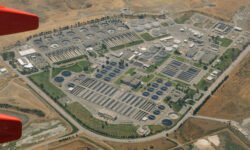
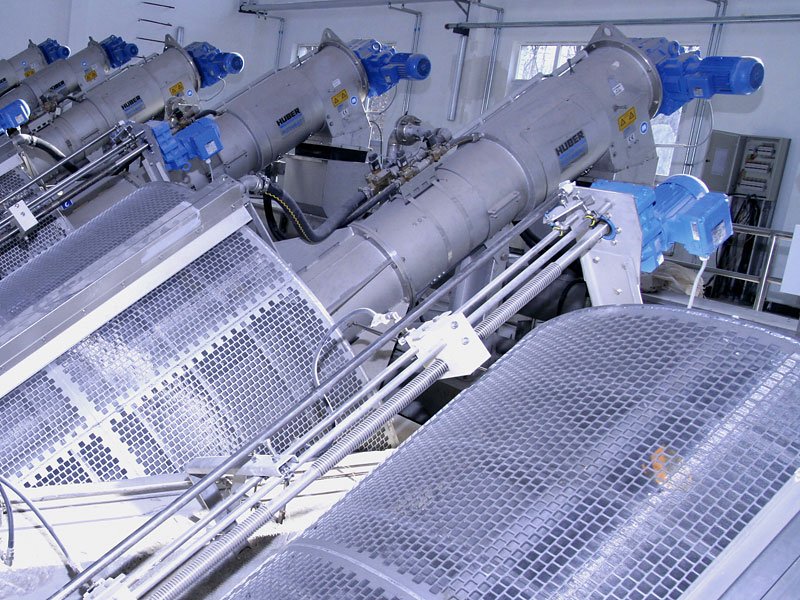
No comments:
Post a Comment